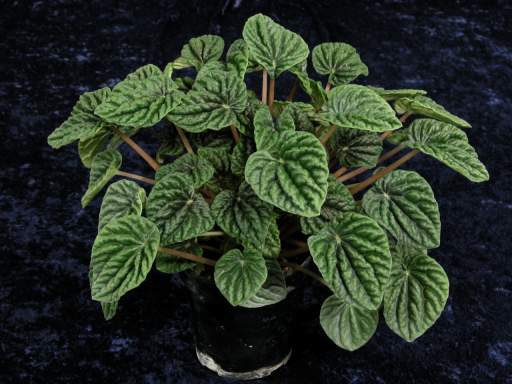Pepperomias
I've almost always had a pepperomia or two growing around my home. They're sturdy, dependable foliage plants that are perfect for greening up the corner of a windowsill or two. Several species of pepperomia are grown as houseplants. All pepperomias are at least semisucculent, and as such do not appreciate being overwatered. Pepperomias will grow well in lower light conditions than flowering plants; however, variegated varieties appreciate a few extra sunbeams to help maintain their variegation
Pepperomia obtusifolia (syn. P. magnoliaefolia) is an upright plant with round, waxy leaves growing upon thick stems. Although the stems will grow quite long, the plant will only reach about a foot tall before beginning to fall over. Since it really looks best standing upright, I typically cut older plants back when they start to flop over and root the cuttings for a new generation of plants. A nice full display can be had with about eight rooted cuttings in an eight inch pot. This plant is nearly indestructible and can tolerate drought and hot, dry environments for long periods of time without voicing a complaint.
Pepperomia caperata (shown on the right) is a smaller plant that grows as a single rosette of deeply corrugated leaves, rarely getting much larger than about six inches tall or wide. This plant is a bit picky about its watering routine; too much water and rot will claim the fleshy stems, while too little water will cause the plant to wilt and drop leaves. I wait until the leaves are just beginning to nod before giving it a good watering to ensure that it gets the right amount of water. Although primarily grown as a foliage plant, P. caperata will send up thin, fingerlike white flowers from time to time. While attractive, the flowers can develop a fairly strong musky scent that some people find objectionable. This plant can be propagated using leaf petiole cuttings in the same manner as African violets.

